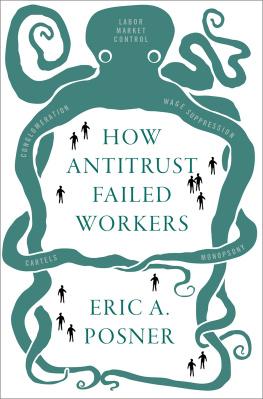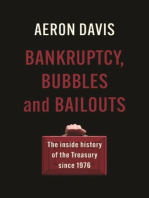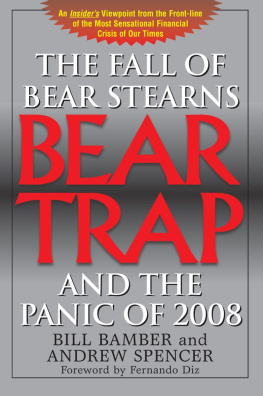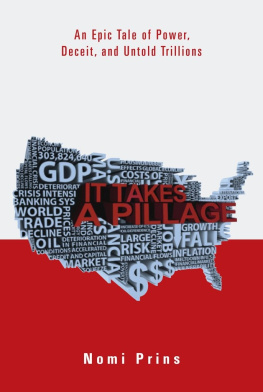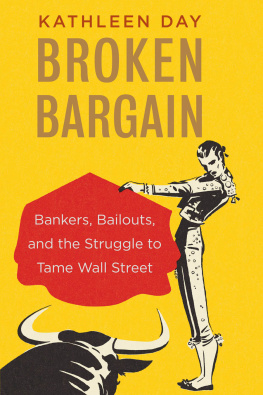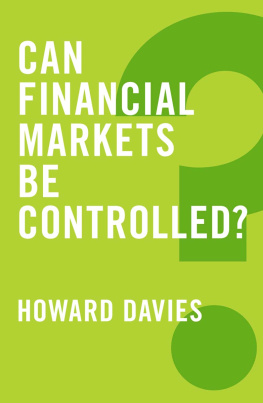
Last Resort
Last ResortThe Financial crisis andThe FuTure oF BailouTs
Eric A. PosnerThe University of Chicago Press chicago and london
The University of Chicago Press, Chicago 60637The University of Chicago Press, Ltd., London2018 by The University of ChicagoAll rights reserved. No part of this book may be used or reproduced in any mannerwhatsoever without written permission, except in the case of brief quotations in criticalarticles and reviews. For more information, contact the University of Chicago Press,1427 East 60th Street, Chicago, IL 60637.Published 2018Printed in the United States of America2726252423222120191812345isBn- 13: 978- 0- 226- 42006- 6 (cloth)isBn- 13: 978- 0- 226- 42023- 3 (e- book)doi: 10.7208/chicago/9780226420233.001.0001liBrary oF congress caTaloging- in- PuBlicaTion daTaNames: Posner, Eric A., 1965 author.Title: Last resort : the financial crisis and the future of bailouts / Eric A. Posner.Description: Chicago ; London : The University of Chicago Press, 2018. | Includesbibliographical references and index.Identifiers: lccn 2017017174 | isBn 9780226420066 (cloth : alk. paper) |isBn 9780226420233 (e- book)Subjects: lcsh: Financial crisesUnited States. | Bailouts (Government policy)United States. | Intervention (Federal government)United States. | Global FinancialCrisis, 20082009.Classification: lcc hB3722 .P666 3028 | ddc 338.5/430973dc23lc record available at https://lccn.loc.gov/2017017174This paper meets the requirements of ansi/niso Z39.48- 1992 (Permanence of Paper).
Contents
Introduction1one
The Transformation of the Financial System10Two
Crisis41Three
The Lawfulness of the Rescue55Four
The Trial of AIG75Five
Fannie and Freddie103six
The Bankruptcies of General Motors and Chrysler126seven
Takings and Government Action in Emergencies148eighT
Politics and Reform165acknowledgmenTs185noTes187reFerences197index209
Introduction[The] Federal Reserve was the only fire station in town.henry Paulson1iF one Thing was clear aFTer The Financial crisis oF 20078,it was that the government would no longer bail out helpless financialinstitutions. President Obama said so. Congress wrote this principle intothe preamble of the Dodd- Frank Act,2 the major post- bailout statute. Allhigh- level government officials confirmed this policy.There was good reason to. The bailouts enraged the public. They spawnedthe Tea Party and Occupy Wall Street. Public officials agreed that bailoutswere anomalous in a market economy, where people who take risks mustbe allowed to lose their money. Bailouts reward irresponsible rich peoplefor foolish investments that harm ordinary people who do nothing wrong.They were needed in the financial crisis only because a global economicmeltdown would have harmed people even more. Or maybe they were notneeded at all. Financial institutions should have been allowed to immolatein a purifying
Gtterdmmerung, or perhaps bailouts would not have beenneeded if people had acted sensibly in the first place.Bailing out firms is wrong, or so it seems. But the word bailout isused by people in different ways, and here is where the trouble starts. TheFederal Reserve Boardlike central banks around the worldpossessesa function known as the Lender of Last Resort (LLR). The Fed has hadthis function since its establishment in 1913. The purpose of the LLR is tolend money to financial institutions that are unable to borrow money dur-ing a financial crisis, a systemic withdrawal of credit and hoarding of cash
2*inTroducTionacross the economy. The LLR makes loans to banks and other financialinstitutions until confidence is restored. Then it is paid back, with interest.In the financial crisis that began in 2007, the Fed exercised its LLRfunction just as it was supposed to. While the crisis did not take the formof a traditional run on ordinary commercial banks, it did conform to theclassic definition of a financial crisis. People withdrew their funds firstfrom certain financial entities operated by banks and investment banks,and then from investment banks, money market mutual funds, and otherfinancial institutions, but these shadow banks had become so importantto the economy that their failure would have caused economic collapse(and taken the regular banking system with them). Because of the unusualnature of the financial crisis, the Fed responded by making credit availableto nonbanks as well as banks; later Congress appropriated funds for the USTreasury to boost the financial system.Did the Fed bail out the financial system? It depends on how onedefines a bailout. The dictionary says that a bailout occurs when some-one provides financial assistance to a person or business that cannot payits debts. But that definition is pretty broad. Suppose I dont have enoughmoney to pay my $1,000 credit card bill, so I go to my local bank and takeout a home equity loan, which I use to pay off the credit card bill. ThenI pay off the home equity loan over the next several years. The bank loanqualifies as a bailout under the dictionary definition because it saves mefrom defaulting on my credit card debt. But there is nothing wrong withsuch a loan. The bank isnt doing me a favor; its charging me interest andmaking a profit.Suppose instead I go to my rich uncle and explain that I cant pay mydebts. My uncle hands me $1,000 in cash and tells me to give it to thecredit card company. Or he gives me an interest- free loan, knowing thatIm a deadbeat and unlikely to repay him. The uncle not only bails me outaccording to the dictionary definition. He bails me out, some might say, ina morally questionably way. He relieves me of responsibility for my debts,perhaps teaching me that there are no consequences to my actions. He in-curs a loss and does not expect to be paid back. Knowing that my unclewill rescue me, I may continue to act in a financially irresponsible manner.Now consider a classic LLR loan during a financial crisis. A bank orother financial institution cannot borrow money because no one is willingto lend. As its bills come due, it faces bankruptcy. The bank possesses nu-
inTroducTion*3merous assets that it could sell off to raise cash to pay its bills. But no onewants to buy those assets because everyone is hoarding cash. If the banknonetheless sells them at fire- sale prices to the handful of hardy souls whohave cash and believe that the financial crisis has peaked, it will be driveninto insolvency because the fire sales do not raise enough cash to pay itsdebts. Instead, the bank applies for a loan from the LLR, using its assetsas collateral. The LLR can lend because it has an infinite time horizon. Itdoesnt matter how long it takes for the bank to pay it back because theLLR can keep itself in business by printing moneysubject to some vaguemacroeconomic and political limitations.If all goes wel , the bank will either pay back the LLR with interestor lose its collateral to the LLR, which the LLR can resell to the marketonce the crisis ends. The scenario is much closer to my first example thanto my rich- uncle case. The only difference is that in the first example, I goto a private bank, while in the financial crisis, the financial institutionssought loans from the government. But they did so only in the sense thatif someones house is on fire, that person calls the fire department ratherthan looks for a private company to douse the fire. No such private com-pany exists. The government is a kind of credit monopolist during a finan-cial crisis; if the LLR is operated correctly, the government should makerather than lose moneyas, in fact, it did during the crisis of 20078.Of course, it need not work out this way. If the LLR makes loans toinsolvent institutions and against inadequate collateral, it will lose money,possibly a great deal of money. Economists distinguish between the puretype of liquidity support of solvent banks, which I have just described, andthe rescue of banks that have been badly managed and driven into insol-vency. Such banks make bad loans that are not repaid. During the S&Lcrisis of the 1980s, many savings and loans made bad commercial loansand were shut down. The government paid their depositors. Because theliability to depositors greatly exceeded the value of the banks loans, thegovernment lost billions of dollars.The S&Ls were not bailed out and the government lost billions of dol-lars; the banks in distress in 20078 were bailed out and the governmentmade billions of dollars.3 And while people were angry about the S&Lcrisis, the anger was not remotely as sharp and politically damaging as theiranger after the 20078 bailouts. What accounts for the rage?At least among the public, hardly anyone knows that the government
Next page

